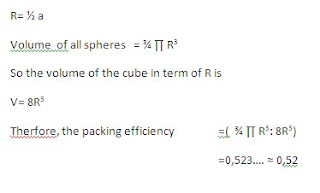
However, the tightly-packed structures make it difficult to view the interior relationships.
The same structure, but with the ions moved further apart allows the interior to be viewed.
If we take the NaCl unit cell and remove all the red Cl ions, we are left with only the blue Na. If we compare this with the fcc / ccp unit cell, it is clear that they are identical. Thus, the Na is in a fcc sublattice.
Since the repetition patterns of Na and Cl are the same in the lattice, the Cl sublattice must also be fcc / ccp. Recall that there may be more than one way to divide a lattice into unit cells. Although it may not be obvious, the red Cl's represent a different fcc / ccp unit cell.
Notice that there are 6 Cl surrounding the Na, and 6 Na around each Cl. We can look at the NaCl as made up of fcc / ccp lattices interpenetrating. The Na's occupy the octahedral sites in the Cl sublattice, and the Cl's occupy the octahedral sites in the Na sublattice.




















